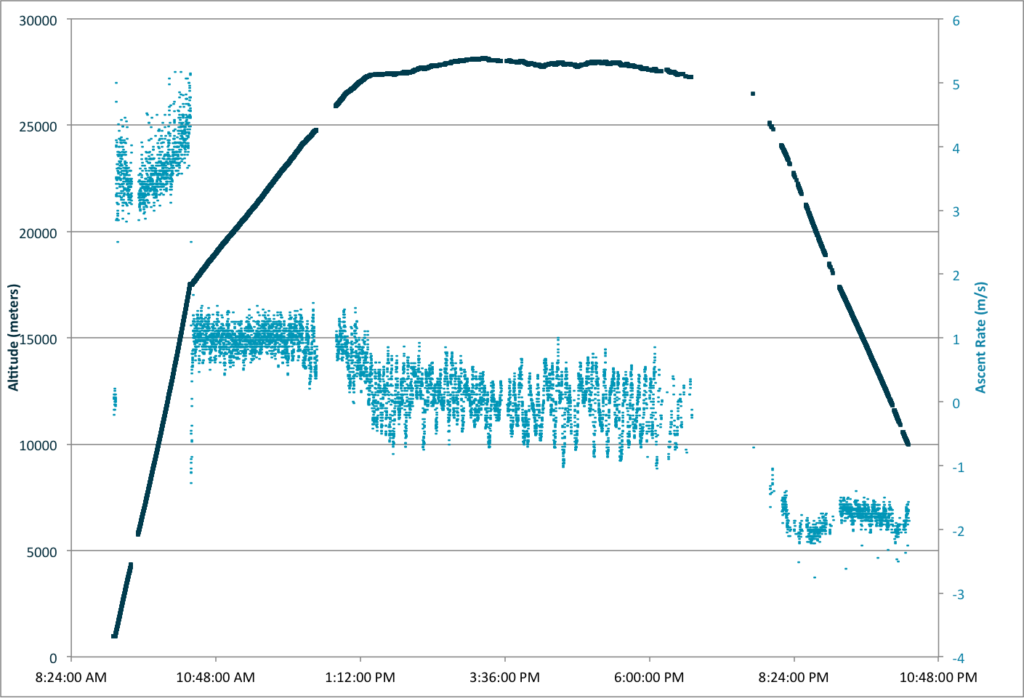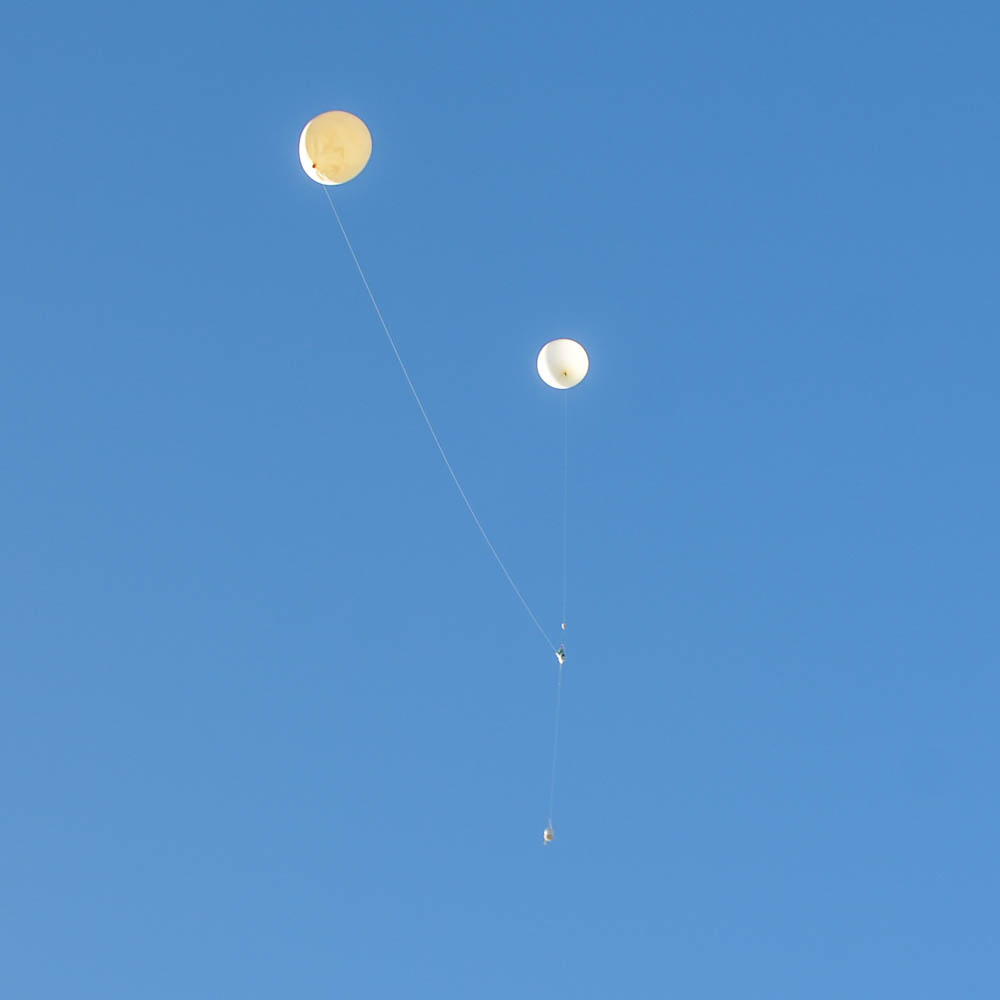Want longer duration weather balloon flights?
It is possible to control weather balloon altitude so that your payload can remain in the stratosphere for long periods of time. Instead of a flight that only lasts for 2-3 hours, these altitude controlled flights can last for an entire day. Use these long flights to take more photos and video, conduct more thorough scientific experiments, or relay radio transmissions.
How to Control Weather Balloon Altitude
While there are a variety of ways to control weather balloon altitude, the simplest is to launch a tandem balloon flight. Initially your payload will be carried aloft by two balloons, a lift balloon and a float balloon. The lift balloon provides the extra free-lift needed to quickly and safely get your payload to altitude. While the float balloon provides the necessary free-lift to keep your payload at that altitude.
Once your payload has ascended most of the way to the desired altitude the lift balloon is cut-away with a device like the HAB Bounder or HAB Cutter. This greatly decreases the ascent rate, ensuring that the float balloon will not burst. Instead it will very slowly ascend until its buoyancy is balanced by the latex envelope acting like a super-pressure balloon.
How do I Terminate the Flight?
Option 1—Termination on command. Use a second HAB Bounder or HAB Cutter to cut-away the float balloon. Your payload will parachute back to Earth, just like it would have with a normal up-and-burst flight.
Option 2—Wait for sunset. When solar radiation stops warming the lift gas in the float balloon the overall buoyancy will decrease. This will result in the balloon slowly descending to the surface at a constant velocity. Note: this works for everything except the very lightest payloads at high altitudes, which can stay sometimes aloft at night.
Do You Have an Example?
The plot below depicts a tandem balloon flight flown from the Sister’s Oregon airport in conjunction with a Sister’s High School science class. The launch occurred at about 9 AM with an initial ascent rate of 3.5 m/s. At around 10:30 AM the balloon had ascended above the jet stream so the lift balloon was released by a HAB Bounder, slowing the ascent rate down to 1 m/s. The balloon slowly ascended for the next 2.5 hrs until the float balloon reached neutral buoyancy. It remained at altitude for the next 6 hours until the sun set. After sunset, the float balloon cooled and slowly descended at 2 m/s until it landed in a tree in Eastern Oregon.

For additional information, check out:
A New Paradigm in Space Based Experiments Using Rubber Balloons
Controlled weather balloon ascents and descents for atmospheric research and climate monitoring

